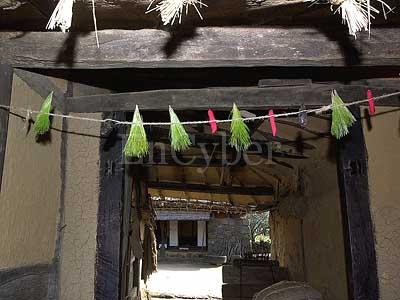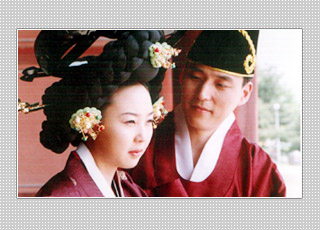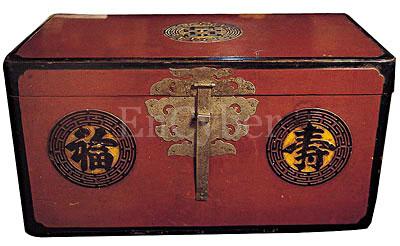

Pages:
Home
Cover
Editorial
Judo
Viet Vo Dao
Korean Traditions
Taiwan Typhoon
Toronto
Soccer Player
England Trip
Paradise
Calendar
Korean Traditional Customs
This story is about Korean Traditional customs. It'll provide insight into the roots of Korea's unique and ancient customs. So, our story starts with the subject of birth.
Traditionally, when a baby was born, we tied some rope called  "forbidden-rope" in front of the gate of the family's house. It hung for 21days and its purpose was to block the devil from the baby. Additionally, it served as a method of informing others that a baby had been born and to warn outsiders to keep out for a while. When this custom began, medical science was in its infancy, however our ancestors were wise by blocking the outsider's entrance to protect the baby's health. Some other interesting things are that outsiders could know the gender of the new baby by what was attached to the rope on the gate. Red peppers and charcoal attached to the rope meant it's a boy. If it was a girl, you could see only charcoal. But these days, almost every baby is born in a hospital, so it is rare to find this custom.
"forbidden-rope" in front of the gate of the family's house. It hung for 21days and its purpose was to block the devil from the baby. Additionally, it served as a method of informing others that a baby had been born and to warn outsiders to keep out for a while. When this custom began, medical science was in its infancy, however our ancestors were wise by blocking the outsider's entrance to protect the baby's health. Some other interesting things are that outsiders could know the gender of the new baby by what was attached to the rope on the gate. Red peppers and charcoal attached to the rope meant it's a boy. If it was a girl, you could see only charcoal. But these days, almost every baby is born in a hospital, so it is rare to find this custom.
The next subject I?ll discuss is wedding customs.  Many customs make up and lead to a Korean wedding. It is rightful to marry your lover. But if you have not found a partner when you reach the ideal age for marriage, a courting, called "sun" in Korean, can be arranged. It is set up by a matchmaker, and those who are similar in age and have common backgrounds are brought together. In the past, almost all marriages were set by arrangement. But these days they aren't.
Many customs make up and lead to a Korean wedding. It is rightful to marry your lover. But if you have not found a partner when you reach the ideal age for marriage, a courting, called "sun" in Korean, can be arranged. It is set up by a matchmaker, and those who are similar in age and have common backgrounds are brought together. In the past, almost all marriages were set by arrangement. But these days they aren't.
People also check their "Gung-Hap", which is advise from a fortuneteller on the compatibility of the marriage. Not only in the past, but also these days people seek "Gung-Hap."
And now, let?s discuss a very unique Korean marriage custom called "Ham." This is a wooden box full of gifts given to the bride from the groom before the wedding ceremony. The actions of the groom's friends while delivering "Ham" is very interesting. For instance, from the end of the bride's block to the front of the bride's house, they'll shout "Ham for sale!" One friend will play the role the horse carrying Ham on his back, and another will play the leader. On approaching the bride's house, the horse says that he is so tired that he wants to relax. And then the negotiation between the leader and the bride's family starts. The negotiation takes place with the bride's family offering money and food for Ham. If the leader is satisfied, the horse moves into the house. In order to receive the Ham, the bride's family will do just about anything to get the horse inside the house. As the Ham is delivered, the bride's family and the friends talk about the bride's and the groom's childhood.

Finally I'll discuss about Korean Traditional wedding ceremony.
For the ceremony, the groom wears the costume of an ancient court official, complete with belt, and the bride an attaches a red evil-repelling spot on her cheeks and forehead. The ceremony, which is usually held in the front yard of the bride's house, begins with the groom presenting a goose made of wood to the bride's parents. It means that he'll be faithful to his mate forever. Then follows a ceremonial hand washing by the bride and the groom and an exchange of bows. They exchange wine and bow to each other again. And then they turn and bow to the guests. The wedding ceremony has ended, and the guests can begin feasting.
After the ceremony, the couple present themselves formally to the groom's parents and relatives for the first time. This is called "Pye-back" in Korean. Pheasant and Chinese dates are prepared and given by the bride's side. The bride's mother-in-law receives the pheasant and father-in-law receives the Chinese dates.
FIN
pics courtesy of: http://koreawedding.or.kr/tradional10.htm